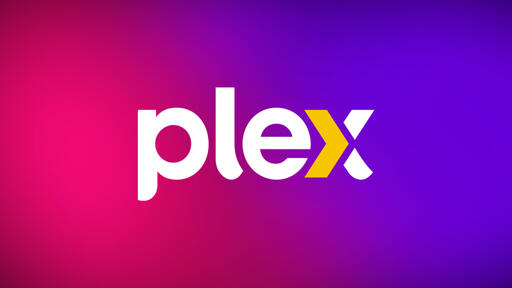- cross-posted to:
- plex@lemmy.ml
- plex@lemmy.ca
- cross-posted to:
- plex@lemmy.ml
- plex@lemmy.ca
We are also changing how remote playback works for streaming personal media (that is, playback when not on the same local network as the server). The reality is that we need more resources to continue putting forth the best personal media experience, and as a result, we will no longer offer remote playback as a free feature. This—alongside the new Plex Pass pricing—will help provide those resources. This change will apply to the future release of our new Plex experience for mobile and other platforms.
any recommendations to get it to work remotely? the good thing about plex was it was easy to set up, but the quality was medicore.
Alright, so I have had Jellyfin installed for years now, but my primary issue is that most devices myself or my users use lack official, readily-available clients. For example, the Samsung TV app is a developer mode install. Last I looked, nobody has put a build into the store.
I really want to use Jellyfin, but I feel like my users simply can’t. I’m interested in others’ experiences here that could help.
I mean, except for Tizen OS isn’t most available? You can find the client for Android, Android TV, Windows, Linux (Flatpak), macos, apple ios, and more.
https://jellyfin.org/downloads/clients/I give all my friends the choice between Plex and jellyfin (I run both containers side by side pointed to the same media folders) and they all invariably choose Plex. I think it has a lot to do with the jellyfin UI, and I think an overhaul like jellyfin-vue or something that looks like findroid needs to happen in order for jellyfin to really appeal to regular people.
I was just able to download it on every TV I have
Yeah.
Jellyfin is spectacular for LAN usage on two computers. Once you start using devices (because, you know, that is what people tend to plug into their TVs…) or going on travel, it rapidly becomes apparent that it just isn’t a competitor.
Hell, a quick google suggests jellyfin STILL doesn’t have caching of media for offline viewing. Plex’s works maybe 40% of the time but… 40% is still higher than 0%.
I have a lifetime pass for Plex and encourage anyone who even kind of cares to get one next time it is on sale (or shortly before the scheduled price hike). I have tried Jellyfin a few times over the years and… it is basically exactly what I hate with FOSS “alternatives”. It isn’t an alternative in the slightest but people insist on talking it up because they want it to be and that just makes people less willing to try genuinely good alternatives.
To put it bluntly, Plex is an “offline netflix” as it were. Jellyfin is a much better version of smbstation and all the other stuff we used to stream porn to our playstations back in the day.
Jellyfin allows you to download whatever you want to your local device. But in a world of streaming, it seems to be a much smaller usecase. I take my tablet camping with me all the time, download some shows via Jellyfin and watch via Jellyfin. Maybe you’re using the term “caching” differently from the use case, but if local files is what you’re after, it absolutely does it. Just click download in a couple of different locations.
Did they? Or is that still the old hack of “just download the raw file. Your tablet is just a computer”?
Because I didn’t see it advertised on the main web page and a quick google got me to https://github.com/jellyfin/Swiftfin/discussions/364 which is open and abandoned tickets for the ios apps.
https://forum.jellyfin.org/t-offline-downloads?pid=16373#pid16373 suggests it is also in the same boat for android. You can find workarounds but they aren’t using jellyfin.
Which is “fine”. I watched WAY too many movies over the years with VLC on a laptop. But… why are we using a shim to treat a library as a streaming service in that case? Which gets back to Jellyfin just not actually being a Plex alternative for the majority of users.
Oh no! Please GOD, anything but tHe rAw fIlE!!
Seriously though, wtf did I just read? That can’t possibly be your real stance, can it?
This is a huge problem. The blueray remux might be 80 gigs. Most children’s devices will already be filled with other crap.
Your kids will be ok without the 4K60 version of Paw Patrol.
Jellyfin depends on proprietary Microsoft .NET, even on Linux.
It’s still better than Plex and Emby, which are fully proprietary, and have no source code. But I will stick with sshfs with kodi, and nginx plus mpv for now.
Hellooooo jellyfin!
Only use open source software
Jellyfin + Tailscale, the perfect combination.
They do not have chromecast support. (Atleat the last time i checked) Thats a deal breaker for me, would love to use it.
… I’m using Chromecast and Google TV, though Chromecast isn’t very good, really, and Google TV stared showing commercials every now and then since a while ago, so that too will be on its way out.
But yeah, they’re supported
IIRC it has it. Not if you’re behind VPN or a tunnel. Only over HTTPS.
deleted by creator
Yes, it does introduce insecurity, so not for everyone. I have it behind a domain on cloudflare (let’s encrypt cert) with nginx reverse proxy
deleted by creator
Yes, it took me a long time to figure it out. Which is why Plex feels comfortable charging for it
deleted by creator
Hmm i need to revisit it again. Thanks!
I just confirmed it has it. You need to be on the same subnet, which is why VPN won’t work. But then everything shows up as castable
I’m surprised by the resistance to Jellyfin in this thread. If you are using Plex, you’re already savvy enough to use bittorrent and probably the *arrs. If you can configure that stuff, Jellyfin is absolutely something you can handle. If you like Docker, there’s good projects out there. If you’re like me and you don’t understand Docker, use Swizzin community edition. If you can install Ubuntu or Debian, and run the Swizzin script, you’re in business.
deleted by creator
I just setup jellyfin and it totally is the same. Install. Point it to a media folder. Setup port forwarding.
deleted by creator
But let’s be honest - it really is not complicated. That was a one minute configuration in my router.
deleted by creator
Ok, that is a totally different use case than mine. I’m one of those guys browsing a selfhosting community on the fediverse and I only want to stream my own stuff to my mobile and provide my wife with audiobooks. If you’re providing a bigger group of people with streaming services, who are not tech savvy, another software might be the better solution. But that doesn’t mean that Jellyfin is bad - it’s just another use case with different requirements
deleted by creator
That ease of outside LAN access poses a big risk tho. Plex can and eventually probably will share, be forced to share, get hacked etc Those cloud accounts imply the possibility of very detailed reports about who’s streaming what, when, where, from which source…
deleted by creator
Me too. Docker isn’t hard if you use a compose file. It’s easy to read syntax.
Linux server.io has great documentation for their images.
I have Jellyfin and Plex running from the same virtual machine pointing at the same media. If it wasn’t for the one crappy TV I have in my house with no Jellyfin client, Plex would be gone.
Docker isn’t hard if you use a compose file. It’s easy to read syntax.
This is giving me “yaml isn’t hard to use if you use a compose file!” It is, actually. It’s easy for you because you understand the technology. The vast majority of people do not.
I think I represent a huge portion of Plex users; I am tech savvy enough to follow a simple walkthrough on YouTube to get my server setup. But the arrs, jellyfin, and docker both look like graduate level chemistry to me.
Plex has been around for ages and they have put money into making things easier for users like me to understand with events such as Pro Week and directly paying content creators to dumb things down for me.
I’ve got to admit that I’ve never used Plex (I’m a cantankerous open software fanatic), but how do you get your media on there? You’re hosting your own server so presumably you’re downloading the media somehow. Are you doing it manually? If so, you can do the same with Jellyfin. Is it automated with some tool built into Plex?
I’m ripping it with makemkv, actually. I have a fairly large blu ray collection that is slowly going onto my DAS.
I keep a Jellyfin instance running as a hedge. Here’s the thing with Plex (and actually a lot of companies set up similarly): those “lifetime” memberships are a trap. Think about it: Plex gets your money ONCE but they have ongoing expenses. Sooner or later, they’ll have spent every single cent made by a lifetime membership unless they either get more folks OR squeeze everyone a bit more.
Once they started adding their own shows and making strange UI decisions, I could sense the end was coming. A move like this brings it up fast. Jellyfin is not nearly as good as Plex in a lot of ways, but it’s really Open Source.
Anyway, a lot of rambling, but in short: when there is a “lifetime” subscription, watch out!
Yes, it’s one thing to offer a lifetime subscription early on to get a large cash infusion and reward early adopters, but it’s a big red flag if they don’t get rid of the lifetime subscription eventually. What will happen is one by one, the people that use the service the most will switch to lifetime and your cash flow will dwindle. Eventually the only people left on the month to month are the casual users who don’t use it very often and will leave as soon as a price increase happens.
As a result I imagine more users will look at other offerings such as Jellyfin.
https://github.com/jellyfin/jellyfin
https://jellyfin.org/A big part of the appeal with Plex is that you can run a server and friends can sign up for a FREE account and stream remotely. When you take this away, you’re going to just kneecap the whole offering. This is such an arrogant move from Plex: they are thinking that when this change goes live they will get a flood of subscriptions. The more likely outcome is they will get a few subscriptions and a lot more angry and frustrated people that walk away.
Friends can still stream for free, as long as the server is paying for plex pass. That was my main concern, too, but they make a point of stating it directly in the release.
deleted by creator
Ease of setup was how I just got one techie friend and two non-techie gamer friends to set up Plex servers and we had libraries shared to each other within 15-30 minutes. I don’t want to think about explaining VPNs and SSL to them for the alternatives.
jellyfin + tailscale is all you need. It’s so damn good and easy
I used to use Plex, then one day my internet was down and since Plex couldn’t phone home, it wouldn’t let me log in to watch media ON MY LAN.
So yeah it’s inherently broken. That’s before you even consider the licensing.
I can watch it without Internet
i’m not sure why it would do this, i’ve never had any issues with watching plex while the internet is down (in fact that was one of my original uses for it, to have movies and tv in a building without internet). I don’t have it turned on but I do know you can go into server settings -> network and set a list of IPs/subnets that can access without any authorization at all. That lets you use plex without even having a plex account afaik.
Wireguard so you are always seen as being on the local network. This bit of assholery is easily defeated.
Or morally better than breaking TOS, use a FOOS alternative like Jellyfin.
Nothing morally wrong with working around a artificial limitation.
I already pay for plex pass but I’m going to start looking into jelly fin out of principle. I will not support the enshitification of a service I use and this is how it starts. Soon they will have tiered subscriptions and then the cheap one will be taken away and the cheapest paid one will be stuffed with ads then all tiers will be stuffed with ads then they will jack up prices again or charge more for sharing with family or block it all together to force your family to get their own sub and the circle of enshitification will be complete.
I’m not pirating a bunch of shows just to pay Plex for the privilege of watching it.
Also remember to give them your credit card, name and address for the privilege of pirating the content.
Even better, it’s now a nice database of who companies and governments can go after when they want or need to!
Why do people use this when Jellyfin exists?
Because of the Wife Factor. Getting people to convert requires getting past a lot of social inertia. It requires you to first convince them that the convenience of streaming services isn’t actually worth paying for. Then it requires an elegant onboarding experience. Lastly, Plex simply makes remote access easy. Sure, you could fiddle with reverse proxies for Jellyfin. But that’s easy to mess up. Instead, it’s much smoother to simply sign into Plex.
I can talk my tech-illiterate “My google chrome desktop icon got moved, and now I don’t know how to check my email” mother-in-law through Plex’s sign-up process over the phone. In fact, I did. It’s familiar enough that anyone who has signed up for a streaming service can figure it out. I can’t do that with Jellyfin, because their eyes glaze over as soon as you start talking about custom server URLs or IP addresses. Hell, my MIL’s TV doesn’t even have a native Jellyfin app available on the App Store. If I wanted to install it for her, I would need to sideload it.
Jellyfin does a lot of things right. But by design, the setup process will never be as elegant as Plex’s, because that elegant system requires a centralized server to actually handle it. And centralized servers are exactly what Jellyfin was built to rebel against.
To be clear, I run both concurrently; Jellyfin for myself, and Plex for friends/family. I got the lifetime Plex Pass license a decade ago, and it has more than paid for itself since then. But it sounds like a bunch of my friends and family may end up switching to Jellyfin if they don’t want to deal with the PlexPass subscription.
This is the best ad campaign Jellyfin could have asked for.
As a plex pass lifetime user, this doesn’t change anything for me.
I am, however, blown away that the price went from $75 CDN to $350 CDN over the last 10 years!! That’s just insane!







